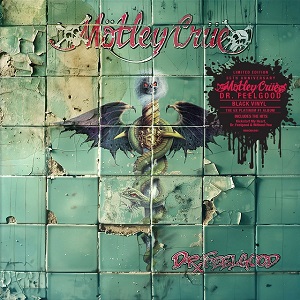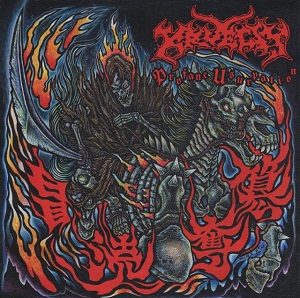JOE SATRIANI – “It’s A Love That Will Never Happen”
July 29, 2015, 9 years ago

“We had a great time making it… and it’s always more exciting when you go out on a limb and try something big; a new concept you haven’t done before. It just makes the end result more rewarding,” says legendary guitarist Joe Satriani, talking about his just-released 15th studio album Shockwave Supernova.
Not only is Shockwave Supernova the title of Satriani’s new album, it’s a direct reference to his alter ego; the astounding performer who plays guitar – at times with his teeth – on stage, and not the mild-mannered gentleman taking part in this interview. “Well, if you embrace the concept, just for the fun of it; I would have to say yes, we are two different people. In reality, it obviously doesn’t exist; I’ve always been the same person,” admits Satriani. “But I have noticed over the years, that the person at home working on an album for a couple of months is different than the guy that’s out there on stage every night. The guy out on stage will do things that the home guy doesn’t do, and the longer you stay out on tour, the more you become kind of like ‘the tour animal’.”
“When I was a lot younger,” says the 59-year old guitar god, “it was very hard to make that transition back and forth. To go ultra-public when you’re out on tour, I had to twist my arm a little bit to overcome natural shyness to be friendly to strangers, and seek out social situations to promote the music. And instead of just staring at the guitar while I was playing - like I would do at home - being a bit of an extrovert on stage to draw attention to each little musical invention that I’m playing. The thing that may help people understand the process I went through with that, I noticed there was this small division in personality that I had, and that’s how I managed emotionally to go from home to stage, and stage to home. I thought to myself, wouldn’t it be funny if it was so real, so palpable, that other people noticed it and there was a struggle – like a science fiction film, where slowly the alter ego takes over, and the original person is lost. I just found it kind of fascinating as a concept to write music to, as if it were a movie where there’s a struggle, and eventually the real person wins out by convincing the alter ego that there’s a better life waiting for him if he just turns into a better composer, better performer, and better person so to speak. It’s a long explanation I know, but it’s one of those funny things that I thought well, this is going to help me write the record, arrange, produce, perform; but actually nobody really has to know about the story. It’s like a writer’s device.”

It’s remarkable that there’s two different rhythm sections on Shockwave Supernova, yet song after song they sound so good together. The reason behind the different lineups is that five of the tracks were leftover from the Unstoppable Momentum sessions in 2013. Drummer Vinnie Colaiuta (Frank Zappa, Sting) and bassist Chris Chaney (Jane’s Addiction, Rob Zombie), appear on a few tracks, with drummer Marco Minnemann (The Aristocrats, Tony MacAlpine) and bassist Bryan Beller (The Aristocrats, Dethklok) handling the rest. “Yeah, this was a big bonus for me, being able to have two incredible rhythm sections to work off of,” reveals Satriani. “This added to the drama I was trying to create. Of course, it became a bit of an issue for my engineer and co-producer John Cuniberti, because he did have to sort of wrestle with the idea that we were going to have to take these two drummers – who play in a very different way – and sonically have the same kind of palate, so that it was pleasant to listen to; a different drumming style, but not jarring to where the whole sonic picture was different. The way he achieved this was the path of least resistance – to go for a very hi-fi natural drum sound, to let the drummers’ natural tones just sort of be there – rather than using an electronic or sampled approach, which would have been taken maybe five or ten years ago. The other thing would be the bass players – extremely different; just on a real nerd-musicianship level. Bryan is a fingers player; he has a very unique technique of using his fingers not only in a traditional way, but in a sort of a tapping way where he sets the bass up to be very sensitive. Chris Chaney is more traditional; more like the way I play bass. He’s very well versed in using a pick, and he goes for a different kind of approach. He’s more of a standard rock bass player in that way, but he thinks like an orchestra player, which is a real great bonus. The third and fourth element is that I’m playing bass on a couple of songs, and Bobby Vega’s on one song.”
“Having this shifting rhythm section… I’m glad you noticed it. It wound up being one of those things where it was a bit of a challenge in the beginning, because it was going to take 15 songs. The label was into it, John Cuniberti was excited; he had actually remixed five of the older tracks while I was still on tour as sort of a test to see if we could change the mix direction from the Unstoppable record to this new record. From that, what it revealed to me was, I needed to work on these songs more. One of them, ‘Lost In A Memory’, we replaced the drums and the bass, because I had the realization that I’d given the older band the wrong direction, in terms of parts. So I rewrote the whole rhythm section to be remarkably different and gave it to the new rhythm section and said, ‘What do you think? Can you make this rock?’ It turned out that my new arrangement really fit well with their musical predilection. So this helped me tell the whole story, cause the idea was, this character Shockwave Supernova, is going to do a lot of soul-searching about all the things he thought was his real life that he lived through – the funny times, the deep, soul-crushing times where he’s meta-physically challenged, periods where he was falling in and out of love. He comes close to the end of the record and ‘Stars Race Across The Sky’, then eventually ‘Goodbye Supernova’, and he really realizes that he’s not who he thought he was. I’m right and he has to change and evolve into something better. It’s very dramatic from a composer’s point of view. But my hope was that people could just listen to the record in any sequence; they wouldn’t have to be burdened by the concept.”

There’s a song on Shockwave Supernova called “Scarborough Stomp”. Scarborough is a suburb of Toronto (where BraveWords is based), and yours truly was actually born in Scarborough. “I wasn’t referencing the Canadian city, but in fact the English city,” clarifies Satriani. “Scarborough was, and is, a city, a town, a very old village in England that was purportedly known for its unusual fairs, and the kind of music and the scale that was used as the basis for their village music. That scale happens to be what we would call the Dorian Mode, the second mode of the major scale. For the average person when they hear it, it has sort of a Renaissance feel to it; that’s how it’s used in modern films. I spent a lot of time in England, we tour there every season, and we’re there for two weeks plus. When you tour in England, your gigs are about two and half hours away from each other; it’s just the way they do it there. So, I was just fascinated by that. Growing up, I remember the song ‘Scarborough Fair’ by Simon And Garfunkel; also focused on the scale as the basis of the musical hook. It was one of those musical things you’re playing one day, you’re writing this riff and you’re intrigued by it. The riff actually had started quite a long time ago, I had just never really figured out exactly how to finish it, where to take it. Finally, my imagination for the movie running in my head caught up with the musical structure that I had put in place for the song. So I just imagined a modern Scarborough event where people are having fun; no one’s getting stomped. It’s more of a dance or something like that.”
The tune that follows “Scarborough Stomp” is “Butterfly And Zebra”. Before even hearing it, “Dog & Butterfly” by Heart came to mind. “Ah, well this was almost like a secret trivia question for people. It actually references the song ‘Little Wing’ by Jimi Hendrix, where he’s talking about how all this woman ever thinks about is butterflies and zebras. It came into my mind, the imagery, because I was thinking about this character and how he falls in love; but he also realizes that because he’s not real, it’s a love that will never happen. The relationship will never come to fruition; it’s a lost cause. That got me thinking about the classic story throughout history where two people fall in love, but because they’re from different villages or countries, or they’re different races or the same sex, or whatever, society says, ‘No, you can’t do that, because you’re different. We don’t like people mixing it up.’ So this phrase from ‘Little Wing’ popped into my head, because it’s a love song as well. It has that sort of feeling of like, as Hendrix sings it, it’s like she’s a free spirit; you can never tie her down, and she flies on. When I think about butterflies and zebras, those would be the two most unlikely living things – that are very colourful to imagine, they’re strikingly beautiful – but what if they did look at each other, fall in love; and in an instant imagine an idyllic life together. Only to realize that in reality there’s no way that a butterfly and a zebra can get it on, and how society – even the animal kingdom – would not let them do it. It was just a phrase I used for this beautiful love song that’s about a deep love that can never really happen.”
“Butterfly And Zebra” has an even larger significance as the Hendrix influence signals Satriani going back to the very beginning of his career. “Yes, absolutely; I started playing guitar the day that he died (September 18, 1970). I had been a crazy Hendrix fanatic for years prior to that, since his first album (Are You Experienced) was brought to my attention by the wonderful world of FM Radio, growing up in New York. I think ‘The Wind Cries Mary’ was the first thing I heard on the radio, and it just totally blew my mind. I was a young kid; I think I was nine years old or something. I just remember asking my older siblings, ‘what is that sound? Who is that?’ They were so fascinated that their little brother would find somebody like Jimi Hendrix the greatest thing in the world. That was the beginning of it… his music reached out and touched me like none other.”











